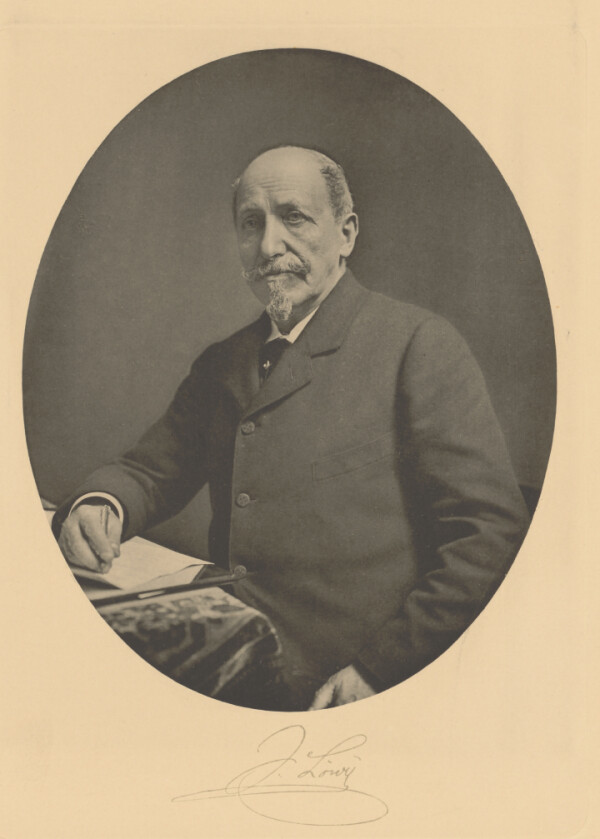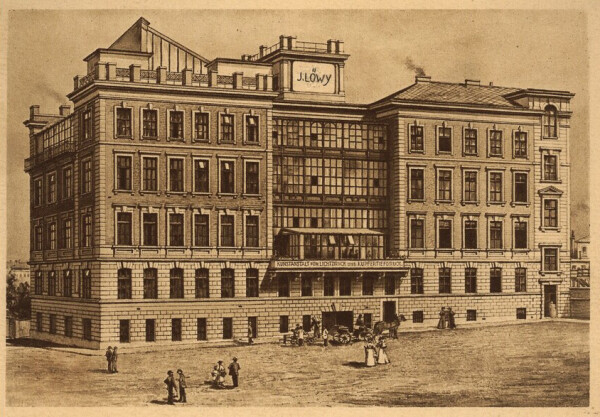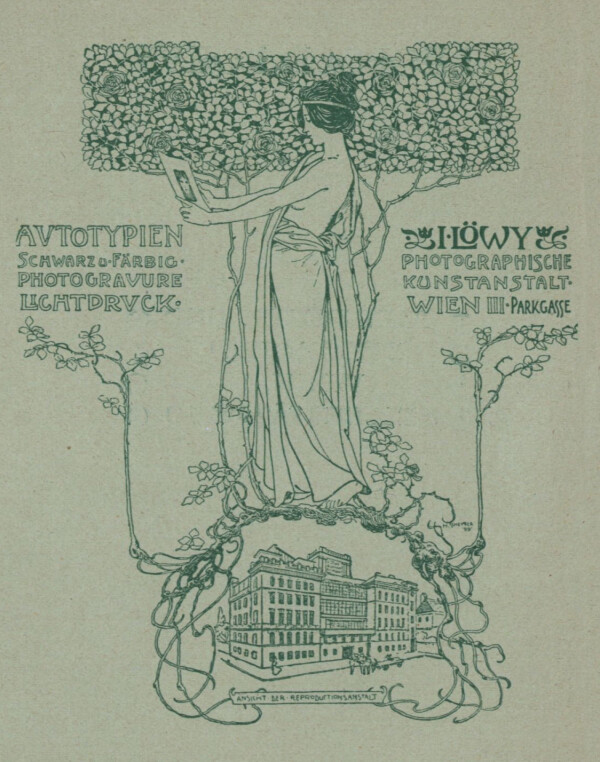Josef Löwy

Josef Löwy, before 1902
© The ALBERTINA Museum, Vienna

Löwy Art Institute building in Vienna III, Parkgasse, around 1897
© The ALBERTINA Museum, Vienna

Advertising for the Photographische Kunstanstalt J. Löwy, in: Vereinigung bildender Künstler Österreichs Secession (Hg.): Katalog der X. Kunstausstellung der Vereinigung bildender Künstler Österreichs Secession, Ausst.-Kat., Secession (Vienna), 15.03.1901–12.05.1901, 1. Auflage, Vienna 1901.
© Library of the Belvedere, Vienna
The Imperial-Royal Court Photographer Josef Löwy owned one of the first portrait studios in Vienna and later founded one of the largest reproduction studios in the Austro-Hungarian Monarchy. Löwy also documented works by Gustav Klimt for publications and printed volumes.
Josef Löwy was born in Pressburg (now Bratislava, Slovakia) in 1834. He completed an apprenticeship at the lithographic printing office of the publisher Eduard Sieger in Vienna and attended the Vienna Academy of Fine Arts for several years. Löwy turned to photography in the 1850s. He opened his first studio in Vienna’s 2nd District and specialized in portrait, architecture and art photography. He received his first large commission in 1856, portraying the 400 participants in a natural scientists’ conference. One year later the photographer created an album to commemorate the centennial of the founding of the Military Order of Maria Theresa in Vienna.
The Founding of a Reproduction Studio
Löwy, who became a member of the newly founded Photographic Society in the 1860s, relocated his Vienna studio several times – for instance into the building of the Gartenbaugesellschaft [Vienna Horticultural Society] on Vienna’s Ringstraße. His company’s continuing success also enabled Löwy to open a photographic reproduction studio in Vienna, which specialized in collotypes, autotypes, heliogravures and color collotypes. Löwy’s studio was also among the first to use collotype fast presses. The studio had about 100 employees at the turn of the century and later expanded into publishing.
Gustav Klimt: Photographic Documentation and Publication
In his role as a photographer, Josef Löwy contributed significantly to Gustav Klimt’s rise to fame: His photographs of the decorations in the Kunsthistorisches Museum, the Court Theatre and Dumba Palace were published repeatedly. Furthermore, Löwy created the well-known heliogravure based on Klimt’s watercolor Auditorium of the Old Burgtheater (1888/89, Wien Museum) which was completed by a supplement including captions and an incomplete list identifying the people pictured in the audience.
In Recognition of a Pioneer
The Imperial-Royal Court Photographer died in Vienna in 1902. The Photographic Society published the following eulogy in the magazine Photographische Correspondenz:
“Josef Löwy was among those figures who witnessed all phases of the development of photography and who started from humble beginnings and worked tirelessly to rise to the greatest significance. In the field of graphic art he unfolded a level of versatility that was unparalleled among owners of private studios.”
His wife Mathilde Löwy ran the company for several years after his death and in his memory created a foundation in Vienna in 1905 for the promotion of photography. This foundation was managed by the Photographic Society and its existence is documented until the late 1920s.
Literature and sources
- Josef Löwy: Die Fortschritte der Photographie, in: Neue Freie Presse, 17.07.1900, S. 15-17.
- Buchdrucker-Zeitung, 27.03.1902, S. 4.
- Photographische Correspondenz, 39. Jg., Nummer 499 (1902), S. 69.
- Österreichische Akademie der Wissenschaften (Hg.): Österreichisches Biographisches Lexikon 1815–1950, Band 5, Vienna 1993, S. 296-297.
- Verlag Leopold Weiss (Hg.): Die Gross-Industrie Oesterreichs. Festgabe zum glorreichen 50-jähr. Regierungsjubiläum Seiner Majestät des Kaisers Franz Josef I. dargebracht von den Industriellen Oesterreichs, Vienna 1898, S. 149-151.
- Josef Löwy: Figurale Compositionen für die malerische Ausschmückung von Decken, Wänden, Zwickeln, Lünetten und kunstgewerblichen Objecten aller Art. Lichtdrucke nach Gemälden und Zeichnungen Wiener Künstler, Band 2, Vienna 1898.
- V. A. Heck Verlag (Hg.): Das k. k. Hofburgtheater in Wien. erbaut von Carl Freiherrn von Hasenauer, Vienna 1890.
- Wiener Freie Photographen-Zeitung. Zeitschrift für Photographie und verwandte Fächer, 5. Jg., Heft 4 (1902), S. 53.
- Österreichische Photographen-Zeitung, Heft 2 (1905), S. 32.
- Ursula Storch (Hg.): Klimt. Die Sammlung des Wien Museums, Ausst.-Kat., Vienna Museum (Vienna), 16.05.2012–07.10.2012, Vienna 2012, S. 112-123.
- Sabine Pénot, Hanna Schneck (Hg.): Farbe in Schwarz-Weiß. Josef Löwys photographische Drehscheibe 1888–1891, Ausst.-Kat., Museum of Art History (Vienna), 28.10.2022–01.05.2023, Vienna 2022.

